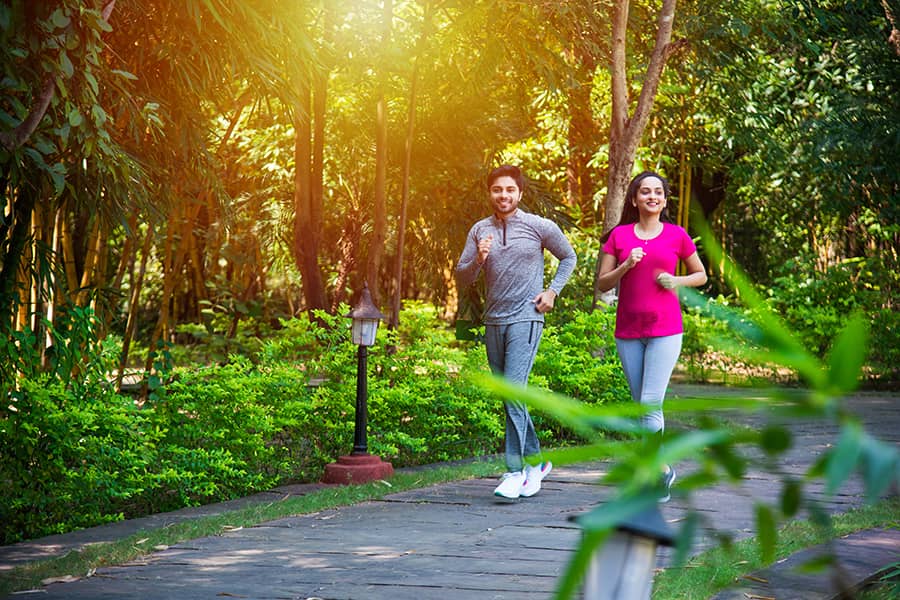Lifestyle: A Controversial Perspective on Public Health

Understanding Lifestyle and Public Health
Lifestyle choices play a pivotal role in shaping public health outcomes, yet they often ignite contentious debates about personal responsibility versus systemic influences. At the heart of this discussion lies the recognition that individual behaviors—ranging from diet and exercise to substance use—are intertwined with societal structures like access to healthcare, education, and socioeconomic status. For instance, while a person may choose unhealthy eating habits, their environment may limit access to fresh produce or safe spaces for physical activity. This complexity challenges the simplistic narrative that blames individuals entirely for their health outcomes.
Moreover, understanding lifestyle as a determinant of public health prompts us to consider innovative interventions that transcend traditional healthcare models. Community-driven initiatives that encourage collaborative living and foster social connections can create a ripple effect on collective well-being. Programs emphasizing gardening, local fitness clubs, or even digital platforms fostering accountability networks cultivate environments where healthier choices feel less burdensome. By reimagining public health through the lens of lifestyle as both an individual choice and a communal responsibility, we open doors to creative solutions tailored to diverse populations—all aimed at enhancing overall health without imposing strict moral judgments on personal choices.
Defining Lifestyle: Beyond Personal Choices
Lifestyle is frequently seen as a fabric stitched together from individual decisions—nutrition, physical activity, and recreational activities. Yet, this limited perspective fails to acknowledge the complex interaction between personal actions and larger societal factors. Elements such as economic status, cultural practices, and environmental contexts can significantly influence lifestyle choices. For example, an individual residing in a financially disadvantaged neighborhood might have restricted access to nutritious foods or fitness facilities, making their personal decisions part of a broader systemic issue instead of merely standalone choices.
Additionally, the impact of technology on our lifestyles should not be overlooked. Social media platforms shape trends and offer an illusion of choice that is heavily shaped by external narratives. These digital spaces can drive individuals to align with certain health standards or behaviors, often masking genuine personal wellness in pursuit of social approval. Consequently, when we contemplate lifestyle within the context of public health, it’s vital to understand how these intricate interactions determine outcomes beyond simple intention or willpower. Viewing lifestyle through this perspective encourages a more comprehensive discussion about public health strategies.
Controversy in Public Health Messaging
Public health messaging often finds itself at the intersection of science, politics, and personal belief systems, creating a fertile ground for controversy. The pendulum swings between factual information and sensationalism, where terminology can spark outrage or validation among different demographics. For instance, the term health crisis can incite urgency in one group while triggering skepticism in another. This variance highlights the importance of understanding cultural narratives influencing how populations perceive health information. Moreover, social media platforms amplify these divisions by serving as both echo chambers and battlegrounds for conflicting views. Misinformation spreads rapidly when it’s wrapped in emotionally charged language or compelling visuals that resonate with specific audiences—sometimes overshadowing evidence-based messages from health authorities. Engaging public discourse requires not only transparency but also an appreciation for local context; customizing messages to fit cultural beliefs can foster trust while defeating stigmas surrounding certain behaviors. Ultimately, navigating this complex landscape demands a blend of empathy and expertise—an approach that values human experience as much as scientific data in shaping community wellbeing.
The Role of Environment in Lifestyle Choices
Our environment profoundly influences the lifestyle choices we make, shaping behaviors through both subtle cues and overt structures. For instance, urban areas often burst with fast-food outlets, while rural communities may prioritize home-cooked meals using locally sourced ingredients. This geographic disparity illustrates how physical surroundings can dictate not only dietary habits but also attitudes toward health and wellness. Interestingly, newer research suggests that even social environments play a crucial role; our friends’ habits can significantly impact our own decisions, emphasizing a domino effect within social circles.
Moreover, technology is rapidly altering our environmental landscape, shifting what we consider ‘normal.’ Telecommuting has redefined daily routines for many—eliminating commutes can foster healthier lifestyle practices like exercise breaks and at-home cooking. However, this same technology also raises concerns over screen time and sedentary behavior when balanced against increasingly digital interactions. As individuals navigate these multifaceted influences, recognizing the intricate web between environment and choices becomes essential for fostering public health strategies that resonate on every level—from local community initiatives to global wellness campaigns.
Digital Influence: Social Media and Perception
In a world where kale smoothies and morning yoga have become the gold standard of health consciousness, the conversation around lifestyle choices is as nuanced as it is vital. But what if the very habits that society heralds as pillars of wellness are not universally beneficial? The public health narrative often champions individual responsibility, urging us to adopt healthier behaviors while vilifying those who don’t. Yet, this simplistic approach overlooks complex socio-economic factors, cultural differences, and personal circumstances that shape our lifestyles in profound ways.
As we dive into this controversial perspective on public health, we invite you to reconsider what it really means to live well. Is it purely about making informed choices within a vacuum of privilege? Or could it be that our obsession with lifestyle optimization inadvertently stigmatizes those navigating greater hurdles? By challenging conventional wisdom and exploring these thought-provoking questions, we aim to spark a dialogue that embraces inclusivity over exclusion—because true public health should celebrate diversity in all its forms.
Innovative Solutions for Holistic Health Approaches
In a world where the pursuit of health has become synonymous with kale smoothies and marathon running, it may seem counterintuitive to question the very fabric of lifestyle-driven public health initiatives. Yet, beneath the surface of this glossy wellness culture lies a contentious debate that challenges our understanding of what it truly means to live well. Are we genuinely enhancing our quality of life through stringent dietary restrictions and relentless exercise regimens, or are we inadvertently cultivating an environment ripe for anxiety and self-judgment? As society increasingly equates personal choices with moral values, those who diverge from mainstream wellness trends often find themselves on the receiving end of scorn rather than support.
This article delves into this controversial perspective on public health, examining how societal pressures around lifestyle can lead to unintended consequences—both physically and mentally. By exploring the dichotomy between healthy living ideals and individual freedom, we invite you to reconsider what constitutes genuine well-being in today’s fast-paced world. Is holistic happiness achievable through rigid adherence to a set standard, or does true health lie in embracing our unique preferences and imperfections? Join us as we unravel these complex threads woven into our collective understanding of lifestyle and its impact on public health.
Conclusion: Rethinking Public Health Strategies
In rethinking public health strategies, we must embrace a holistic approach that prioritizes education and community engagement over fear-driven policies. By fostering empowered communities that understand the intricacies of their health choices, we pave the way for sustainable lifestyle changes rather than temporary fixes. This shift moves away from a one-size-fits-all model toward interventions tailored to specific cultural and social contexts, recognizing the rich tapestry of individual experiences.
Moreover, integrating technology can play a pivotal role in this transformation. Innovative platforms can facilitate real-time communication between health officials and communities, allowing for localized responses to emerging health trends while enhancing accessibility to reliable information. As we envision this new paradigm, it’s crucial to keep wellness at the forefront—promoting not just illness prevention but also encouraging an overall culture of well-being that includes mental health support and social connectedness. Ultimately, by enhancing collaboration among stakeholders—be it governments, businesses, or non-profits—we can cultivate environments where healthy choices are not only encouraged but celebrated.
Recent Posts
-
The Top Destinations to Visit in October, Based on Expert Recommendations
September 25, 2024 -
The Essential Lifestyle: Ways to Streamline and Organize Your Life
September 22, 2024 -
How to Journey on a Budget: Tips for Cost-Effective Adventures
September 21, 2024 -
The Growing Importance of Mental Health for Athletes
September 20, 2024




